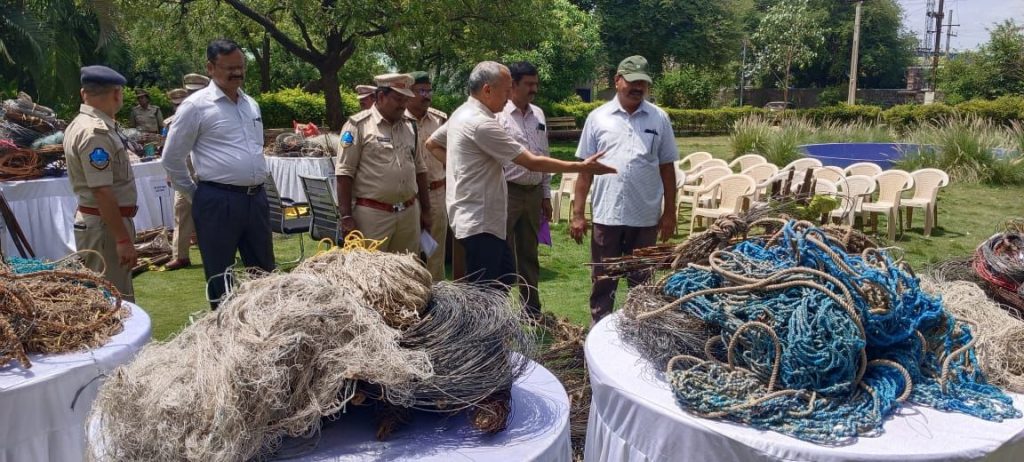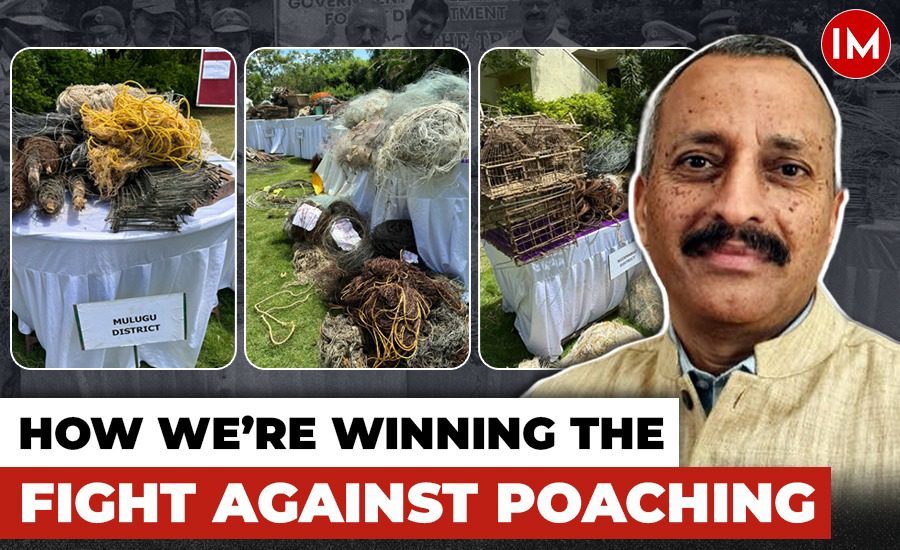Despite having recently amended and strengthened wildlife protection laws, poaching remains a significant threat to wildlife and ecological balance. In Indian forests, attention has often focused on protecting larger animals, but the poaching of smaller species poses a serious threat to biodiversity as well. Addressing this issue requires stringent enforcement of laws, aggressive actions against poachers, and the removal of traps set to capture wildlife.
In response to these challenges, the Telangana Forest Department has taken notable steps. Last December, they launched an intensive initiative called ‘Catch The Trap’ to eliminate snares and traps set by poachers in forest areas. Under the leadership of Mr. Mohan Chandra Pargaien, the Principal Chief Conservator of Forests (PCCF) & Chief Wildlife Warden at the time, the drive has achieved remarkable success. Forest officials have seized over 3,800 traps across various parts of the state and transported them to Hyderabad.
Indian Masterminds spoke with Mr. Pargaien, who retired on June 30 of this year, to gain insight into this effective initiative and its impact on protecting wildlife and preserving biodiversity.

THE LAW & PRACTICES
India enacted the Wildlife Protection Act in 1972 to conserve wildlife, yet hunting and poaching persist, albeit at reduced levels compared to the past. A significant driver behind these activities is the demand for bushmeat, which is considered a delicacy in some regions. Additionally, tigers, elephants, and rhinos are often targeted for their body parts, which are traded illegally, while some animals are killed to prevent damage to crops.
The recent COVID-19 pandemic saw a troubling increase in hunting and poaching activities. Poachers and hunters frequently use nets, live wires, traps, and snares to capture animals. Despite the recording of poaching cases, very few result in prosecution, with reports suggesting that only about one percent of cases lead to legal action.
Furthermore, there is a notable demand for monitor lizards, as their flesh is believed by some to possess aphrodisiacal properties.
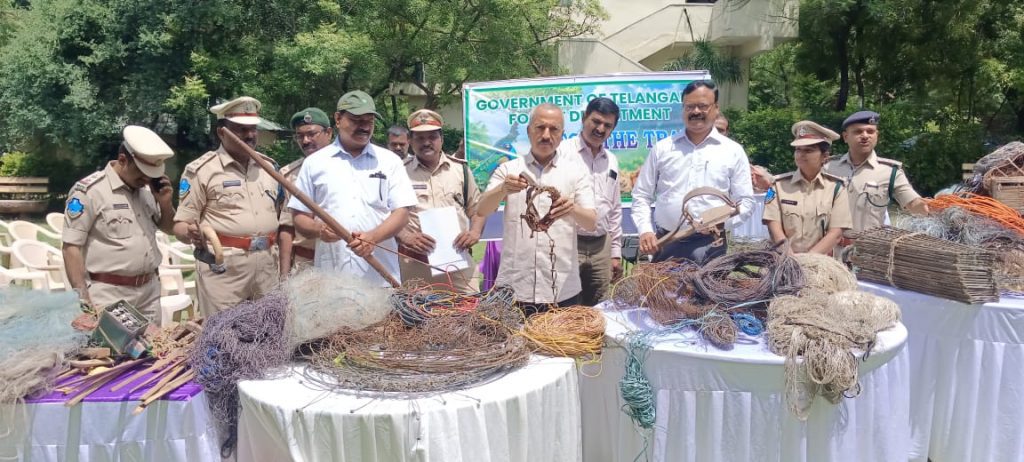
CATCH THE TRAP
To tackle these challenges effectively, a statewide preventive drive called ‘Catch The Trap’ was launched on December 1, 2023, following instructions from the Chief Wildlife Warden. The initiative aimed to curb the killing and hunting of wild animals by directing forest staff to patrol potential hotspots, scrutinize individuals with known hunting records or suspicions, and seize any equipment or devices intended for poaching.
The campaign also involved a thorough inspection of agricultural fields and areas adjacent to forests. During these screenings, all types of hunting devices – such as snares, traps, and cages – were confiscated. After being seized and meticulously recorded, these materials were transported to Hyderabad for safekeeping, ensuring they would not re-enter the field.
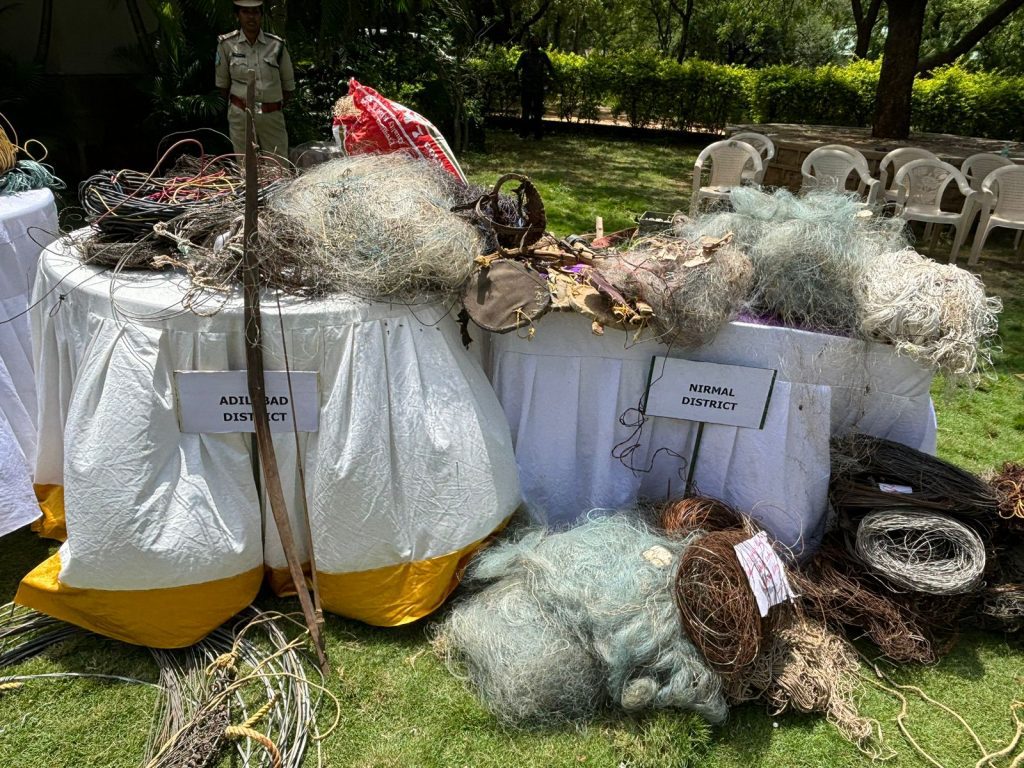
THE ACTION
The ‘Catch The Trap’ initiative has resulted in the seizure of over 3,810 traps and snares, totaling a weight of 4,872 kg.
“Killing and hunting of wild animals using snares, traps, nets, live wires, poison, and explosives is a significant challenge,” Mr. Pargaien noted. To bolster efforts, the department introduced rewards for informants, ensuring their identities would be kept confidential.
Mr. Pargaien emphasized, “Beyond safeguarding wildlife, the campaign has also contributed to reducing human casualties caused by electrocution.”
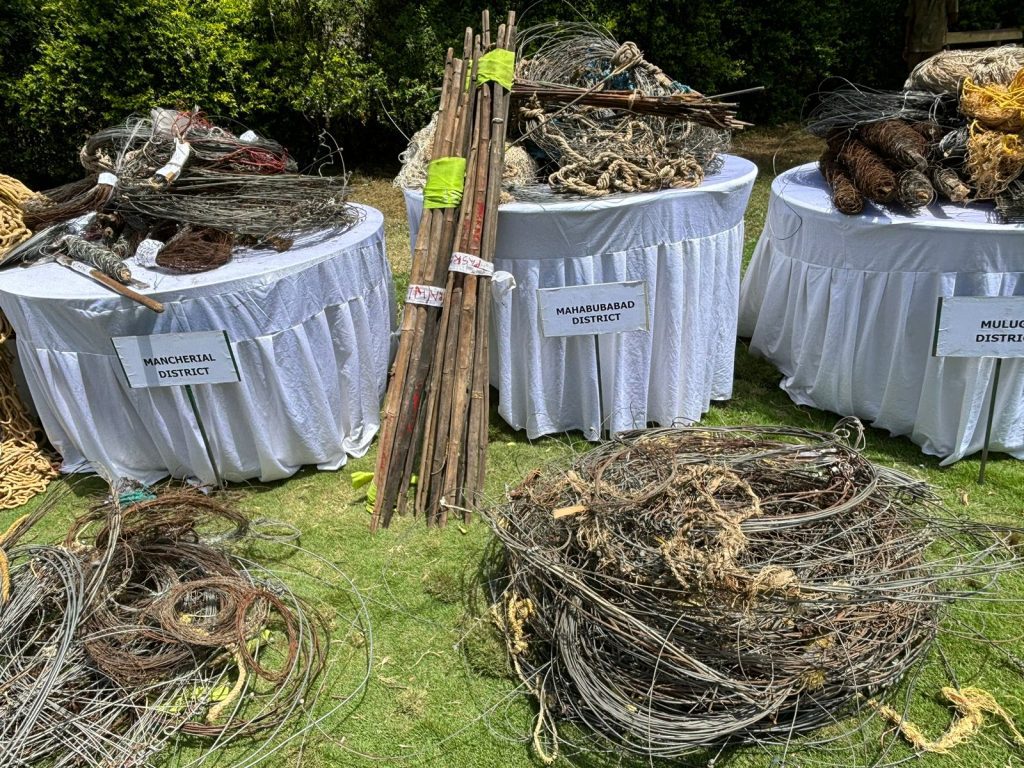
THE IMPACT
On June 26, 2024, Mr. Pargaien inspected various traps and snares seized across Telangana and transported to Mahavir Harina Vanasthali National Park. The primary objective of this transportation was to ensure that seized materials are not reused or recycled due to staff negligence and to ensure proper documentation for future remedial measures and strategies.
Mr. Pargaien stated, “If anyone has information about illegal devices or materials used for hunting wildlife, or individuals involved in such activities, they can report it to the local of District Forest Officers (DFOs) or call 9803338666 or 18004255364. We guarantee that the informant’s identity will be kept confidential.”
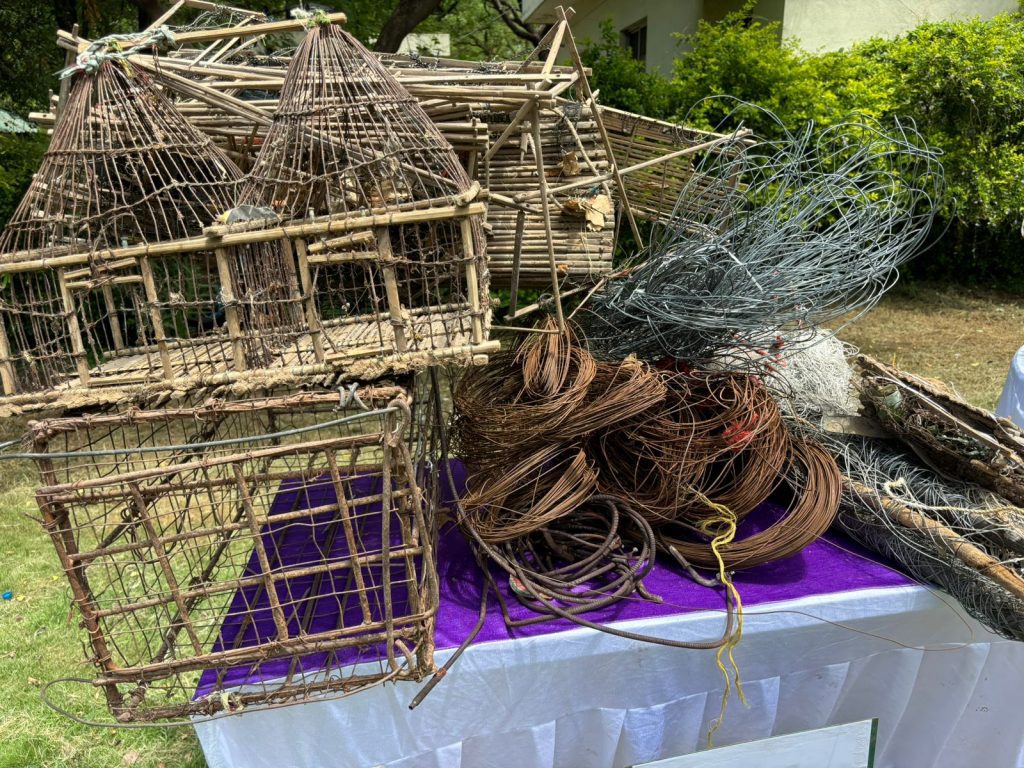
ELECTROCUTION OF WILDLIFE
In addition, the department has made significant progress in addressing wildlife electrocution. Electrification in rural areas poses a serious threat to wildlife. Habitual hunters illegally tap into 11-kilovolt overhead powerlines that cross forests, plantations, and forest rights areas (RoFR). They use these high-tension wires to set up uninsulated traps, which electrocute any wildlife that touches them.
To combat wildlife electrocution, proposed measures include rerouting powerlines away from forests, upgrading to insulated cables, enforcing strict penalties for offenders, boosting support from relevant agencies, and increasing awareness through community education.
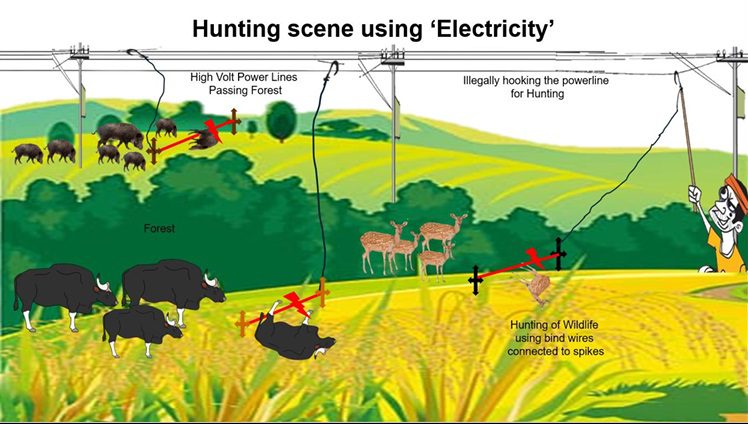
The impact and effectiveness of the ‘Catch the Trap’ program are evident from the data. In the few months since its launch, only three cases of electrocution have been reported. In contrast, there were 21, 15, and 18 cases in 2023, 2022, and 2021, respectively.
SITUATION NOW
Over the past six to seven months, this drive has successfully seized a substantial variety of hunting materials and devices, while also raising public awareness and deterring illegal activities. Local Forest Section Officers, Forest Guards, and their assistants have played a crucial role in this effort, integrating these activities into their daily routines to ensure ongoing protection and conservation of wildlife, including both large herbivores and carnivores.
Mr. Pargaien commended the dedicated efforts of the field staff, praising their work under the guidance of DFOs and Conservators of Forests. He highlighted their significant contribution to saving precious wildlife by protecting them from hunters and poachers.
